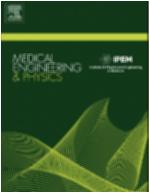| dc.contributor.author | Moghaddamnia, Sanam | |
| dc.contributor.author | Rofallski, Robin | |
| dc.contributor.author | Luhmann, Thomas | |
| dc.contributor.author | Kaeding, Tobias S. | |
| dc.date.accessioned | 2024-01-09T18:07:38Z | |
| dc.date.available | 2024-01-09T18:07:38Z | |
| dc.date.issued | 2023 | en_US |
| dc.identifier.citation | Moghaddamnia, Sanam, Rofallski, Robin, Luhmann, Thomas, Kaeding, Tobias S. (2023). Functional quality assessment of whole-body vibration training devices based on instantaneous amplitude and frequency of photogrammetric vibration measurements, 111 (Ocak) | en_US |
| dc.identifier.uri | https://www.sciencedirect.com/science/article/pii/S1350453322001837 | |
| dc.identifier.uri | https://hdl.handle.net/20.500.12846/756 | |
| dc.description.abstract | The practical use of whole-body vibration training (WBVT) and such research may be negatively influenced by generated vibrations with amplitudes, frequencies, and/or patterns that deviate from preset adjustments on WBVT devices. This study examined whether prolonged regular use can generate respective deviations. Four WBVT devices, used for 19 months in a research project on the effects of WBVT, were analyzed using photo grammetry before start of the research project and after 19 months. Divergences between preset and measured amplitudes and frequencies were calculated for all measurements. To quantify how well the output of devices correlates with the target setting, the vibration characteristics were calculated. In particular, exact long-term measurements related to the vibration amplitude is conducted and analyzed for the first time, which has been found as an important measure of the device functional quality. One device had a significantly (p < 0.01) larger machine run time than the other three. This one showed the most pronounced signs of functional impairments concerning instantaneous amplitudes, frequencies and the mode of vibration after prolonged use. These results
based on photometric measurements underline again that prolonged use can result in divergences between preset and actual applied amplitudes, frequencies, mode of vibration and other accuracy measurement metrics. | en_US |
| dc.language.iso | eng | en_US |
| dc.publisher | Medical Engineering & Physics | en_US |
| dc.relation.isversionof | 10.1016/j.medengphy.2022.103935 | en_US |
| dc.rights | info:eu-repo/semantics/openAccess | en_US |
| dc.subject | Whole-body vibration training | en_US |
| dc.subject | Vibration characteristics | en_US |
| dc.subject | Photogrammetric measurements | en_US |
| dc.subject | Prolonged use | en_US |
| dc.subject | Functional quality | en_US |
| dc.title | Functional quality assessment of whole-body vibration training devices based on instantaneous amplitude and frequency of photogrammetric vibration measurements | en_US |
| dc.type | article | en_US |
| dc.relation.journal | Medical Engineering & Physics | en_US |
| dc.contributor.authorID | 0000-0002-4916-1898 | en_US |
| dc.contributor.authorID | 0000-0002-9523-6766 | en_US |
| dc.contributor.authorID | 0000-0003-0483-7548 | en_US |
| dc.contributor.authorID | 0000-0002-6096-2397 | en_US |
| dc.relation.publicationcategory | Konferans Öğesi - Uluslararası - Kurum Öğretim Elemanı | en_US |
| dc.contributor.department | TAÜ, Mühendislik Fakültesi, Elektrik-Elektronik Mühendisliği Bölümü | en_US |
| dc.identifier.wosquality | Q3 | en_US |
| dc.identifier.wos | WOS:001029646600001 | en_US |


















